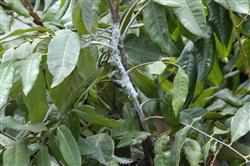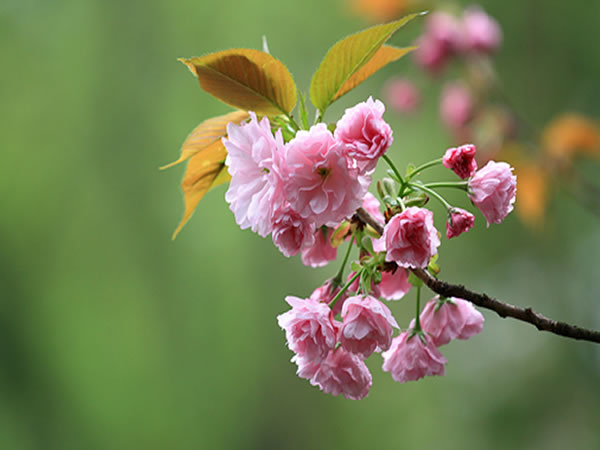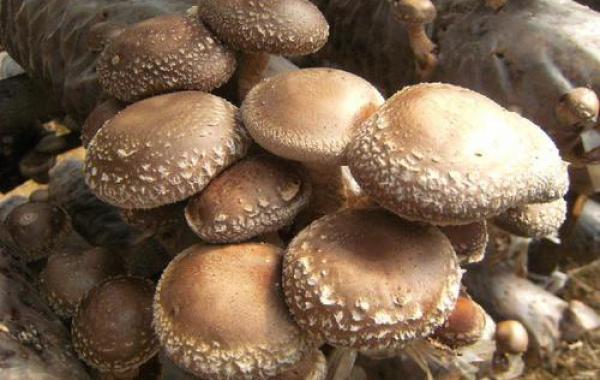white moth Learn more about white moth
-
What is the American white moth?

What is the American white moth? What are the hazards of the American white moth? What are the control methods of American white moth? Also ask the netizens who know to help introduce the American white moth, also known as the American lamp moth and the autumn curtain caterpillar, which causes serious harm to garden trees, economic forests, farmland shelterbelts, etc.
2018-07-11 -
Control techniques of American white moth

Control techniques of American white moth
2018-08-09 -
How to control American white moth and spring inchworm? What kind of medicine should I take? Attached work implementation Plan of Rongcheng County

American white moth and spring inchworm harm many kinds of broad-leaved tree species, so how to control American white moth and spring inchworm? What kind of medicine should I take? To this end, the Rongcheng County government issued an implementation plan for the control of white moths and spring inchworms in the United States in 2018. For the American white moth, matrine is used to kill it.
2020-11-09 How to control American white moth spring inchworm hit what medicine -
How to control white moth wax cicada and wax powder scale in longan orchard?

How to control white moth wax cicada and wax powder scale in longan orchard? Please introduce the method: White moth wax cicada and wax powder scale both belong to Homoptera, the former is Cicadellidae, the latter is Coccidae, which mainly harms fruit trees such as citrus, longan, litchi and mango. In the past, the population of this pest was often naturally controlled by a large number of natural enemies.
2018-09-09 -
What diseases and insect pests do Japanese cherry trees suffer from?

Root nodule disease occurs on or near the root neck of the ground, resulting in short plants and poor growth. When the disease occurs, the root of the plant produces nodules of different shapes, showing brown, rough epidermis and often accompanied by cracks. The initial stage of anthrax.
2018-11-27 -
What is the classification standard of edible fungi?

What is the classification standard of edible fungi?
2020-12-09 -
Control of white moth wax cicada and wax scale in longan orchard

White moth wax cicada and wax powder scale belong to Homoptera, the former belongs to Cicadellidae, the latter belongs to powder scale family, which mainly harms fruit trees such as citrus, longan, litchi and mango. In the past, the population of this pest was often controlled by a large number of natural enemies and rarely reached the level of economic loss. In recent years, due to the extensive management of some longan gardens in our district,.
2018-09-11 -
What are the characteristics of Robinia pseudoacacia valley moth? What is the method of prevention and control?

Robinia pseudoacacia valley moth is commonly known as Robinia pseudoacacia. It mainly harms Robinia pseudoacacia. When the larvae eat the trunk cortex, the tissue in the affected part is proliferated and expanded, the bark is warped and cracked, the skin is filled with rotten tissue, and the skin is sewn with insect dung, which can lead to the weakness of the tree and even the death of the whole plant. Adult, female moth 7 mm 10 mm long, wingspan 17 mm 22 mm, male moth slightly smaller; gray-white or black-brown body, gray-white chest and wing base; gray-white forewings mixed with grayish brown or dark-brown scales, wing base with erect dark-brown scale clusters, wing surface 2 horizontal scale clusters
2019-01-15 -
Control Methods of Common Pests on Flowers and Plants--Silkworm Moth

Philosamiacynthia Walker et Felder belongs to Lepidoptera. The host plants mainly include walnut, pomegranate, citrus, castor, prickly ash, ailanthus, Chinese tallow, ginkgo, laurel, camptotheca acuminata, white orchid, sophora, willow, etc.
2018-08-19 -
The technology of preventing and controlling walnut limb moth

Techniques for preventing and controlling walnut lifting moth 1 morphological characteristics and occurrence regularity of walnut lifting moth belong to Lepidoptera, Lepidoptera. Scientific name: Atrijuglanshetaohei Yang, also known as walnut black. Distributed in Henan, Hebei, Beijing, Shan.
2018-05-29 -
Control of Red-bellied White Lamp Moth, a Flower Pest in October

Control of Red-bellied White Lamp Moth, a Flower Pest in October
2019-08-15 -
Control methods of American white moth

Bind the grass handle to the tree trunk, after the larvae pupate in the grass handle, remove the grass handle and burn it centrally. Contact stomach toxicants can also be used, such as 1000 times of 80% dichlorvos EC, 2500 times of 2.5% deltamethrin EC and 2300 times of 4.5% cypermethrin EC.
2020-11-11 American white moth control method in tree trunk upper binding grass -
Ganoderma lucidum

Ganoderma lucidum grain moth scientific name Hapsiterabarbata Christoph, is a lepidoptera, grain moth family. Also known as borers, larvae eat porous fungi. In recent years, it has been found in Jiangsu area that it is harmful to the culture medium and mushroom body of Ganoderma lucidum, Armillaria mellea rod, Ganoderma lucidum and Pleurotus ostreatus. The damage characteristics are on the covered Ganoderma lucidum. The grain moth burrows into the Ganoderma lucidum body, feeds on the contents of the Ganoderma lucidum, and discharges the feces from the surface of the Ganoderma lucidum body. When it occurs seriously, it can eat the Ganoderma lucidum body. Shape characteristics Adult body length 5-
2019-01-15 -
Occurrence and control of pear root cancer

Occurrence and control of pear root cancer
2018-07-10 -
Jianhu plum lotus petal

The original name is plum-shaped white lotus petal, also known as Jianhu Xuemei. The snow is used to describe the flowers, that is, the flowers are white. The main valve has a round head, the side lobe is tight, and the fleshy flap is fleshy. Veins disappear, shaped like moth eyebrows, silkworm moth holding, lip flat hanging not rolled, there is a little round non-round erythema, such as snow sea rising glow. Seven horses with leaves, about 0.6CM wide, 40C long.
2018-02-26 -
Tea weaving leaf moth

One of the tea branch borer pests, also known as tea sickle moth, tea stem moth, belongs to the family Lepidoptera, CasmarapatranaMeyrick. It is distributed in all tea-producing provinces in China. Morphology: adult body wing tea brown, body length 15~20mm, wingspan 32~40mm. The front wing is nearly rectangular, the outer edge is grayish black, there are large khaki spots on the inside, and there is a small red protuberance in the center of the wing base. Egg horse tooth shape, about 1mm, light beige. The larva is slender and the abdomen is yellow and white.
2019-01-15 -
Wheat moth

The scientific name Sitotrogacerealella (Olivier) belongs to Lepidoptera, Noctuidae. Distributed all over the country. Host wheat, corn, rice, sorghum, buckwheat, Gramineae weed seeds, edible fungi and so on. The damage characteristics of the larvae eat the above seeds. Morphological characteristics: adult 4-5mm long, wingspan 14-18mm, grayish yellow; compound eyes black, antennae filiform, grayish brown; head and face densely covered with grayish brown scaly hairs; lower lip whiskers grayish brown, second thick, third tip
2019-01-15 -
Planting and maintenance techniques of Japanese evening cherry how to grow Japanese late cherry

Planting and maintenance techniques of Japanese evening cherry how to grow Japanese late cherry
2019-03-04 -
Control methods of soybean yellow-bellied lamp moth

The larva of yellow-bellied lamp moth is called caterpillar and leaf caterpillar, which is one of the main seedling pests of soybean. At the same time, this pest can also harm corn, millet, sunflowers, vegetables, weeds and fruit trees. 1. Morphological characteristics: the adults of Spodoptera litura are white, and there are many black spots on the forewings. The abdomen and back are yellow, with a black spot in the center of each segment, two black spots on each side, black stripes on the feet and yellow on the femoral nodes. The egg is hemispherical, the first birth is milky white, and then becomes grayish yellow; the back and ventral surface of the larvae are yellowish yellow.
2019-01-16 -
Occurrence regularity and control of sweet potato diamondback moth

Sweet potato diamondback moth Herseconvolvuli (Linnaeus) belongs to Lepidoptera, Noctuidae. It is distributed in Japan, as well as in Liaoning, Hebei, Henan, Shandong, Shanxi, Zhejiang, Taiwan, Guangdong and other provinces in China. It mainly harms the plants of Convolvulaceae, Solanaceae and Leguminosae. I. form
2020-11-08 Species sweet potato diamondback moth occurrence regularity and control
